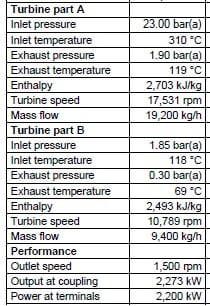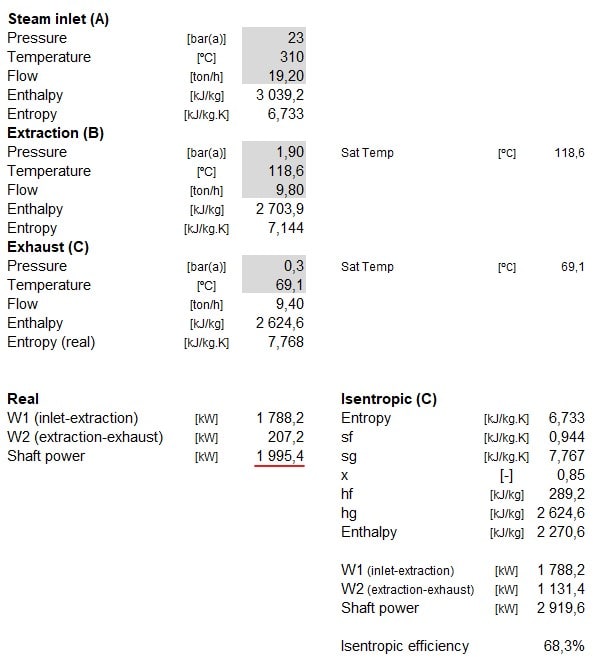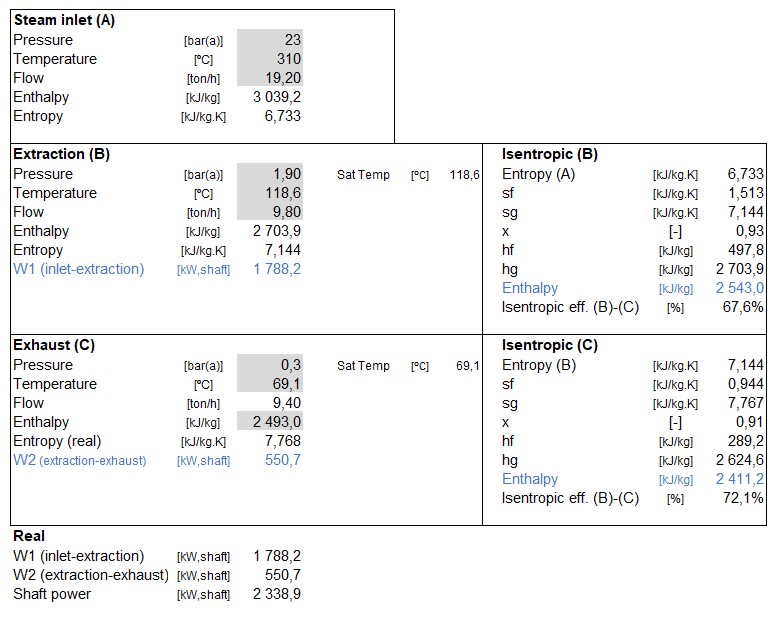Hi all!
Digging on the subject i found in several situations with real manufacturers data, that the mechanical (shaft) power output is much more higher than the the one that we calculate using the isentropic efficiency.
For instance, i can get the following values, as an example:
- Isentropic efficiency: 0,75
- Heat Power available: 5376 kW (difference between enthalpies at the inlet and outlet conditions)
- Mechanical Power delivered by a real steam turbine: 5000 kW
- Real mechanical efficiency: 0,93
So if we use the isentropic efficiency to calculate the output mechanical power, is, in fact, an error.
Does anyone have any explanation?
Thanks!
Digging on the subject i found in several situations with real manufacturers data, that the mechanical (shaft) power output is much more higher than the the one that we calculate using the isentropic efficiency.
For instance, i can get the following values, as an example:
- Isentropic efficiency: 0,75
- Heat Power available: 5376 kW (difference between enthalpies at the inlet and outlet conditions)
- Mechanical Power delivered by a real steam turbine: 5000 kW
- Real mechanical efficiency: 0,93
So if we use the isentropic efficiency to calculate the output mechanical power, is, in fact, an error.
Does anyone have any explanation?
Thanks!




![[bowleft] [bowleft] [bowleft]](/data/assets/smilies/bowleft.gif)